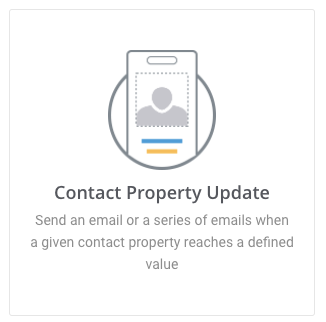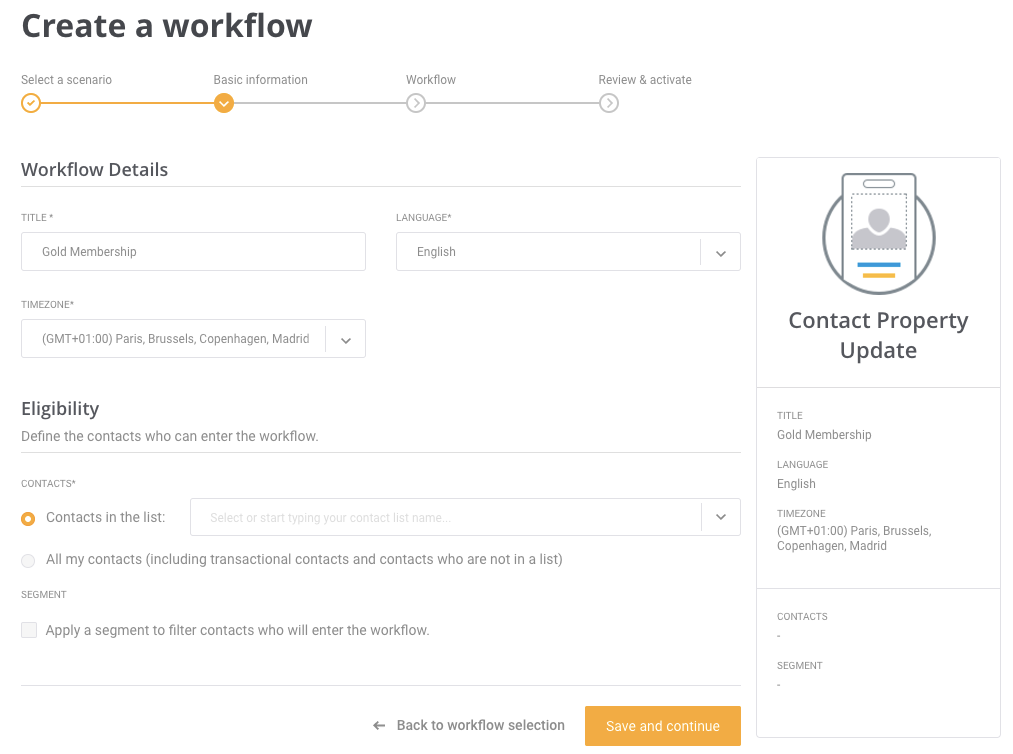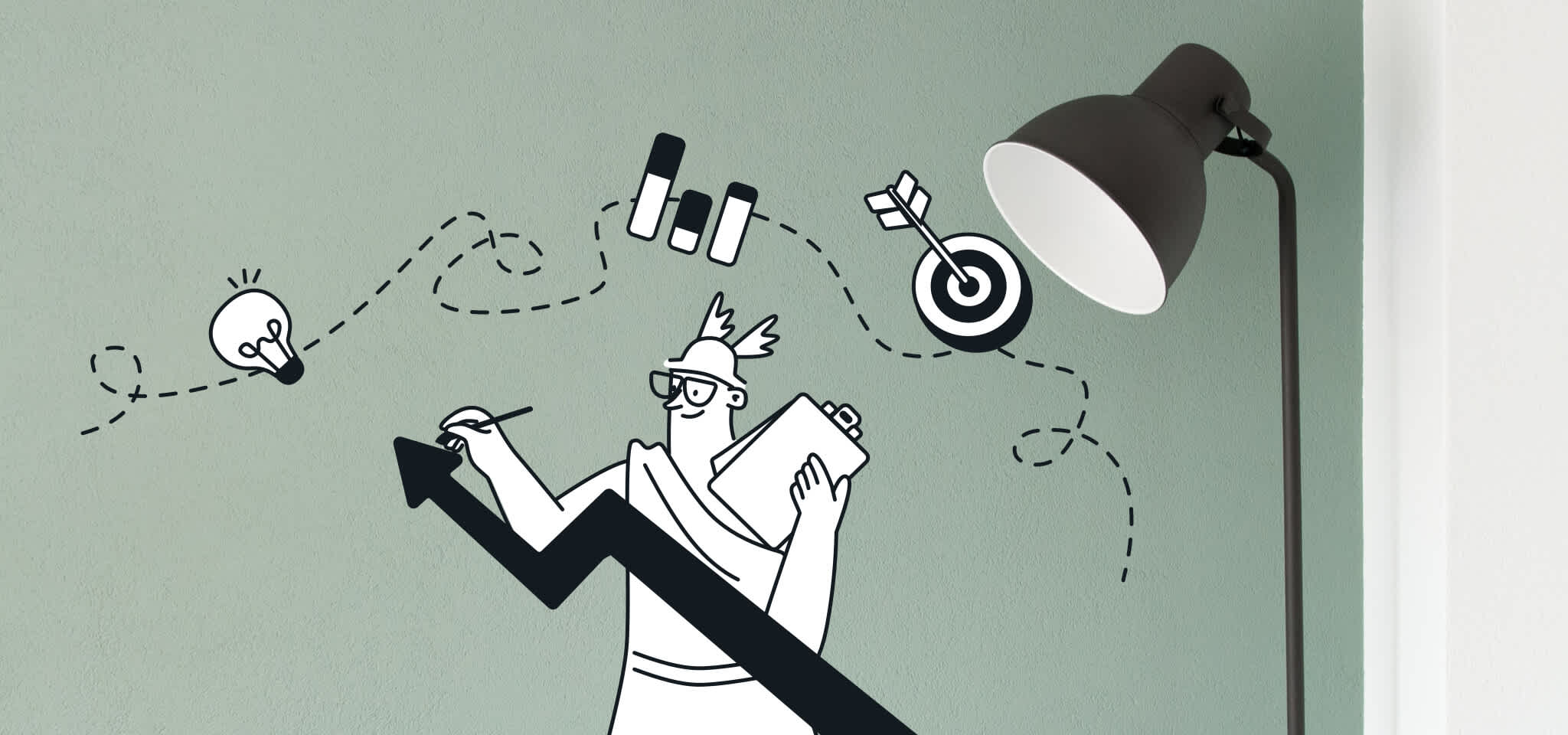Product
Let customer interactions power your email automation
When it comes to engaging with brands, customers expect timely and contextualized messages. Read how Mailjet's Email Automation can help you.

PUBLISHED ON
In the age of real-time communications and instantaneity, we’ve grown used to wanting things, and wanting them now. Why buy the new season of Game of Thrones and wait around for it to be delivered tomorrow, when you can find it on demand and get it just now?
Similarly, when it comes to engaging with brands, customers expect timely and contextualized messages that match the way they interact with them. But still too many brands fall short of implementing the communications their customers expect, or that will maximize the company’s ROI.
Table of content
Send automated emails based on customer interactions
In a recent study, Econsultancy noted that 28% of organisations cited technology as a barrier to optimize conversion rates. The same study showed that only 37% of respondents are already using behavioural emails, with an impressive 47% planning to use it in the near future.
We know reaching the right customer at the right time cannot be a matter of luck, which is why a few months ago, we introduced Mailjet’s Email Automation, allowing you to codelessly automate the sending of an email, as soon as someone subscribes to a contact list. Today, we’re enhancing this feature to enable you to trigger automated workflows based on the update of contact properties.
What does this mean, you ask? It means you’ll be able to reach your customers when it really matters. How? Read on!
So, what can I do with behavioral emails?
Using data from customer interactions with your brand is a good way to engage with your clients and prospects, but you’d better do it wisely or you could end up sounding a bit too creepy. I mean, getting nice reward for your loyalty is nice… but maybe getting an email after every single time you visit a website is a bit too much?
Using the API to synchronize customer data after an interaction between your contacts and your brand is a good way of keeping track of interactions, to leverage them in your marketing strategy.
For instance, while it wouldn’t make sense to send an email each time your clients earn a point in your loyalty program, it could be interesting to send them a communication when they’re about to reach the next loyalty level, to encourage the next purchase by focusing on them with extra benefits they’ll obtain, as an incentive.
Winning automation strategies are waiting for you
All this behavioral information are the basis of countless automation strategies that can really boost your engagement, brand loyalty and ROI. Have a look at some straight-forward and easy to implement examples below:
Welcome loyal clients to a new status of your loyalty program, to introduce them to all the perks that come from being a devoted client;
Offer a special deal to reward frequent customers after their 5th order on your website;
Send an email with a white paper or a case study after a lead visits a predefined number of product pages on your website…
These are just some ideas, but there are unlimited ways you could leverage behavioral information to define new strategies that work for your company, and there is no doubt that one can meet your business needs.
How to create behavioral emails with Mailjet
Thanks to Mailjet’s Email Automation tool, it’s never been easier to create behavioral emails. You first need to make sure that the data you want to use to trigger your automated emails is updated on a regular basis, either thanks to our API or through periodic imports of CSV files.
Head out to Mailjet’s automation tab, available for all Mailjet’s Premium users, and select the brand new “Contact Property Update” scenario.

As with other automation scenarios, you will then be able to define some basic information, like the title of the workflow or the language of the emails, and define whether you’d like it to only apply to contacts in a specific list, or even a segment.
So, practical example: let’s imagine we’re an e-commerce and that, after each purchase, our customers collect loyalty points. When they reach 200 points, our loyal clients are awarded the Gold status, and we want to send them two emails (one to give them a special offer, and another one to explain them the benefits of the Gold membership).
In this first step, we will name our workflow “Gold Membership” and apply it to all contacts.

OK, so far so good? Let’s move on to the serious stuff.
In the next step we will edit the workflow itself. A drop-down menu will allow you to choose the contact property that will trigger the emails. Depending on the type of data the contact property you select involves, you will be prompted to choose between several options of logical operator. You will then be able to define the value that will trigger the action.
In our example, we choose the contact property “Points” and we specify “equals or greater than 200”, and then click Save.

Once all of this is done, you’ll be able to add one or several emails to your automation flow, and set delays between those emails as we previously explained.
Following our previous example, we would send one email right away with a special offer, and a second email two days later to explain the benefits of being a Gold customer.
Et voilà! Creating behavioral emails with Mailjet really is a piece of cake. And, ‘cause you know, we love making your life easier, we can’t wait to hear how you’re using this new automation scenario to interact with your clients at the right time.
The contact property update scenario is available as of today for all Mailjet Premium clients. Create an account for free to discover it during our 30-days free Premium trial, or upgrade to a Premium Plan now.
If you are wondering whether you have to do some automation check out our marketing automation guide.
Tried it? Love it? We’d be more than happy to hear how you’re making the most of these new features. So if these improvements have changed your life, share your story with us on Twitter.








